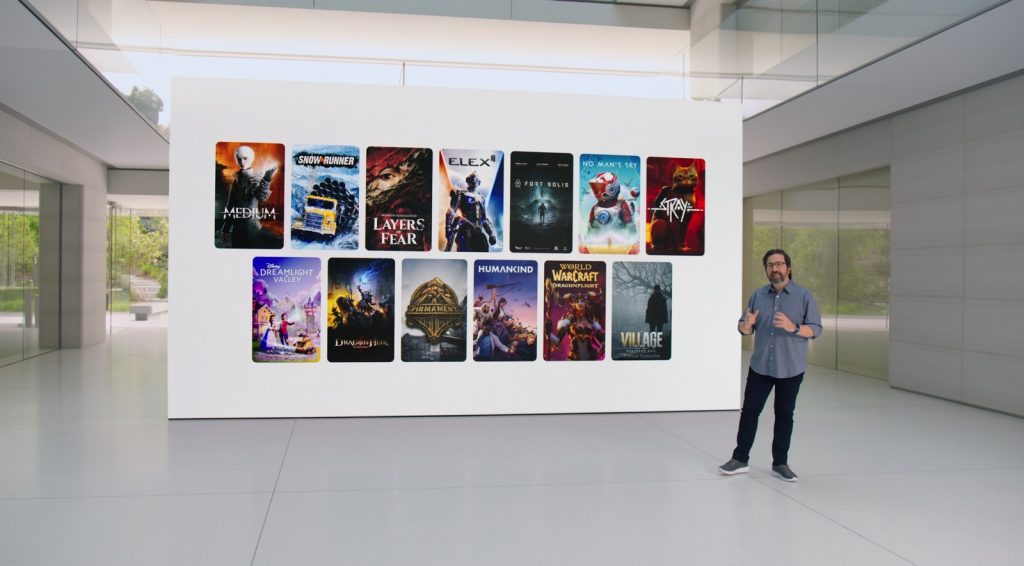Apple has been promising gaming on the Mac for years now. With the introduction of its own silicon, things started to change – for the better. In addition, over the last few years, Apple has also updated macOS by adding GameKit tools and other improvements to entice developers to bring their games to the company’s ecosystem.
With macOS Sonoma, for example, there’s even a dedicated Gaming Mode on the Mac, which prioritizes CPU and GPU usage by the game. That said, in an interview with Inverse, Apple marketing managers Gordon Keppel and Leland Martin talk about the company’s increasing push to high-end gaming on the Mac.
“Now, every Mac that ships with Apple silicon can play AAA games pretty fantastically. Apple silicon has been transformative of our mainstream systems that got tremendous boosts in graphics with M1, M2, and now with M3,” says Gordon Keppel.
With “tens of millions of Apple silicon Macs,” Apple has really put effort into the gaming world, especially with the recently-released M3 chips, as they support hardware-accelerated ray-tracing and mesh shading, features that help offer the best gaming experience available with titles like Resident Evil Village.
Tech. Entertainment. Science. Your inbox.
Sign up for the most interesting tech & entertainment news out there.
By signing up, I agree to the Terms of Use and have reviewed the Privacy Notice.
Kepell also praises other hardware improvements that the PC competitors don’t have: “We’ve got Mac-specific features that you don’t find on every other system like our displays, our speaker systems,” Gordon Keppel, a Mac product marketing manager, tells Inverse. “So when I’m sitting in front of a system that is performant, it looks great, it sounds great, it doesn’t get incredibly hot — that is a great gaming experience!”
Leland Martin, for example, says that gaming on the Mac isn’t the final stop, as the company has also integrated top-tier chips with powerful GPUs across the iPhone, iPad, and also Mac.
“If you look at the Mac lineup just a few years ago, there was a mix of both integrated and discrete GPUs,” Martin says. “That can add complexity when you’re developing games. Because you have multiple different hardware permutations to consider. Today, we’ve eliminated that completely with Apple silicon, creating a unified gaming platform across iPhone, iPad, and Mac. Once a game is designed for one platform, it’s a straightforward process to bring it to the other two.”
The full interview is available on Inverse‘s website.

